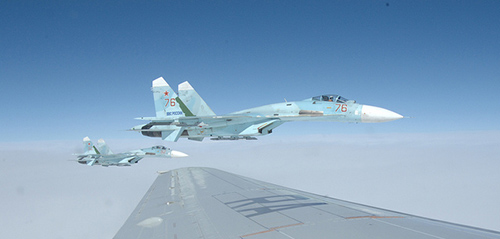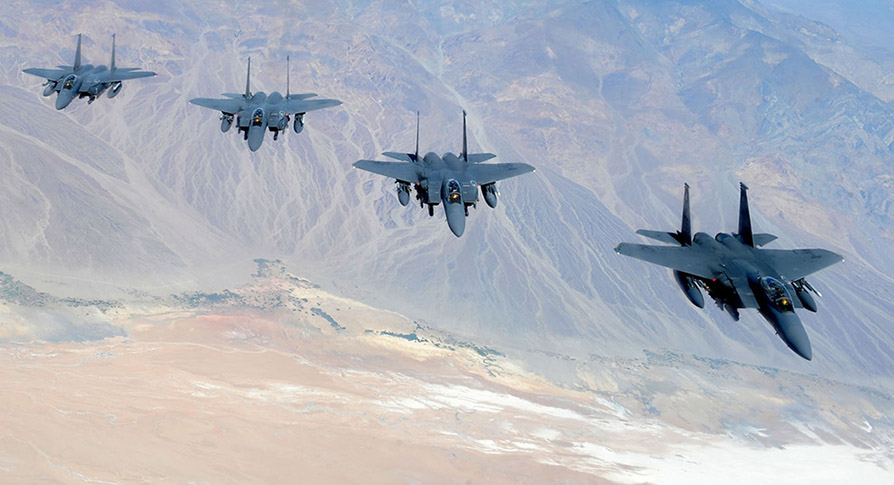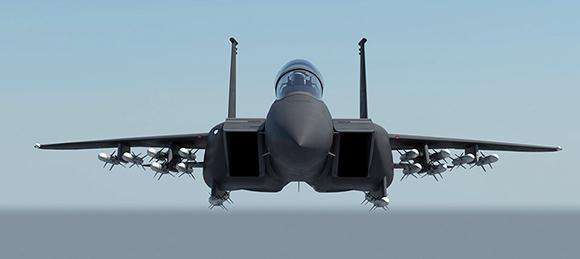"We want to be able to protect Turkish airspace. That's what we did with the missiles Patriot and this is what we will continue to do with the F-15 ". This is what is officially communicated by the US Department of Defense, confirming the sending of 12 F-15C and six F-15E at the Turkish air base of Incirlik.
"We hope that Russia respects the sovereignty of Turkish airspace. Until they violate it there will be no problems. We are certain that there will be no problems".
Last October, both NATO and Turkey accused Russia of violating Turkish airspace. Russian officials explained the incident as "an incident due to bad weather conditions".
As a member of NATO, the United States has maintained an air defense agreement with Turkey called "Active Fence". A few days ago, the United States withdrew its batteries Patriot from Turkey and made the decision to send fighters to prevent possible airspace violations. The real purpose of the American fighter mission was clear from the beginning. Under the definition "guaranteeing the security of NATO allies", it was clear that the enemy of that possible violation was the Russian fighters.
The F-15, armed with eight air-to-air missiles of different radius, will strengthen the Turkish-Syrian border, intercepting the Damascus aircraft that periodically cross over into Ankara territory. But from the beginning it seemed absolutely unlikely that such an air force would be risked only to intercept the battered Syrian aircraft.
 The F-15, now official, will have the task of escorting bombers committed against ISIS in the vicinity of Syrian regime forces and Russian warplanes. The Air Force F-15 in Turkey will be the first pure "dogfighters" that the US will have in the Region. The Pentagon has redeployed several platforms such as F-22, F-16, A-10 and B-1: these also carry bombs and air-to-ground missiles. The F-15, on the other hand, only carry weapons for air-to-air combat. It should be noted that the F-15C have never been deployed in Afghanistan, nor in Iraq. The war in Syria is different.
The F-15, now official, will have the task of escorting bombers committed against ISIS in the vicinity of Syrian regime forces and Russian warplanes. The Air Force F-15 in Turkey will be the first pure "dogfighters" that the US will have in the Region. The Pentagon has redeployed several platforms such as F-22, F-16, A-10 and B-1: these also carry bombs and air-to-ground missiles. The F-15, on the other hand, only carry weapons for air-to-air combat. It should be noted that the F-15C have never been deployed in Afghanistan, nor in Iraq. The war in Syria is different.
The 12 last October the Russians deployed a Sukhoi Su-30 interceptor fighter force in Syria to escort all the aircraft engaged in the Arab Republic. The Russians, in the official statement, spoke of the interceptor fighter and not of its 'M' variant, which also carries out the task of precision fighter-bomber. From the Kremlin they reiterated the need to escort the bombers, but even then we wondered against which enemies. It seemed clear that the opponents would have been the coalition planes, certainly not the Islamic State which, as we know, at most owns commercial drones and a few helicopters (obviously stolen from loyalist troops).
Withdrawing the USS Theodore Roosevelt from the Persian Gulf, the United States no longer has the 65 fighter planes that until the end of last September participated in the raids in Syria and Iraq. The Russian interceptor fighters, until today, were rulers of the sky (although in fact there is no such thing no-fly zones).
The arrival of the F-15 will once again change the Syrian scenario: their only goal is Russian fighters.
 (photo: US Air Force / Boeing)
(photo: US Air Force / Boeing)












